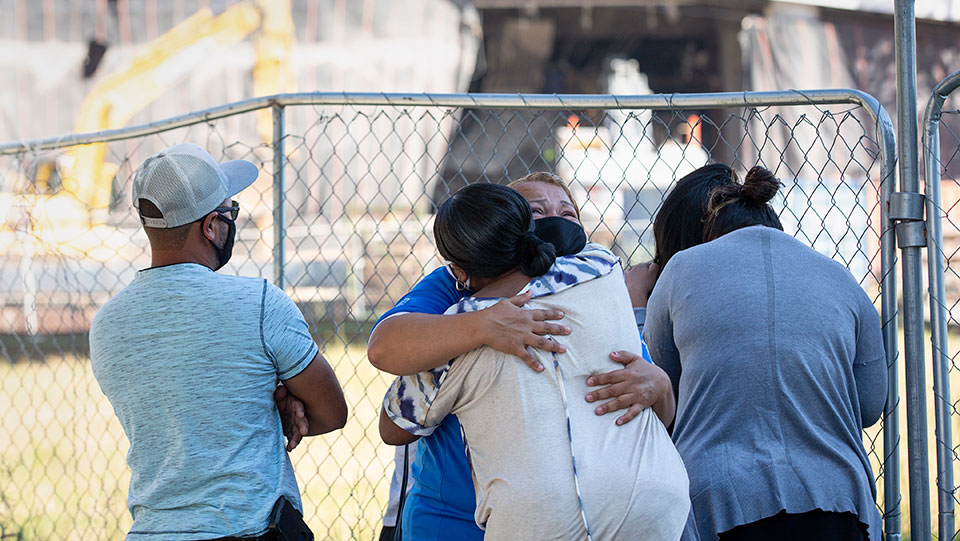
WASHINGTON (PAI)—A worker died every 99 minutes from fatal occupational injuries in 2019, the Labor Department revealed Dec. 16 in its annual report on the prior year’s data. And that wasn’t the only dubious job safety record set last year.
The report, from the Bureau of Labor Statistics, said 5,333 workers died from on-the-job injuries, 83 (2%) more than in 2018, and the highest figure since 2007. There were 5,147 deaths in 2017, the first year of the anti-worker GOP Donald Trump regime.
And the data for 2020 could be even worse, BLS says—but it won’t be because of COVID-19, at least not officially. That’s because the 2020 fatality data, to be released next December, will leave out worker deaths directly linked to the coronavirus pandemic.
“Fatal occupational illnesses, including COVID-19 are out of scope for the Census of Fatal Occupational Injuries unless precipitated by an acute injury. It is possible a COVID-19-related fatality resulting from an acute injury may be in scope and appear on the CFOI file,” the BLS said.
As for the 2019 rate of fatal occupational job injuries, it was 3.5 per 100,000 workers, where it has stalled, after prior declines, since Trump took office. But it was much higher in selected occupations, notably, fishing and farming.
Trump’s reign has featured declining enforcement of job safety by DOL’s Occupational Safety and Health Administration and revocation of prior OSHA rules protecting workers. Democratic President-Elect Joe Biden says he plans to reverse both trends.
“No one should get sick, injured, or die simply because they went to work. Every worker has the right to return home from work safely. But Trump has attempted to weaken several occupational and safety regulations established during the Obama-Biden administration,” Biden said in his “Build Back Better” platform—understating Trump’s damage.
For example, he rolled back regulations requiring companies to report their workplace injuries, so they are disclosed to the public. He removed restrictions on line speeds in pork plants, making meatpacking jobs even more dangerous. He reduced the number of OSHA investigators and safety enforcement efforts, despite the fact that OSHA inspections reduce injuries.
As president, Biden says he “will reinstate these critical safety protections and ensure all appointments to committees and advisory boards under OSHA intimately understand the consequences of not having functional safety standards in place.” He’s also announced his intention to direct OSHA to substantially expand its enforcement efforts, increase the number of investigators, and order OSHA to develop—not dump—new workplace safety standards.
The DOL data show those changes are needed. Besides the increase in fatal occupational injuries, even before the coronavirus pandemic hit, a dubious new record was set in fatal job injuries among groundskeepers (229).
Construction and trucking again had the most fatal occupational injuries last year, the report said. There were 1,005 fatalities among truckers and related drivers, a new record since DOL started collecting that data in 2003. And 1,061 construction workers were fatally injured on the job, a 5% increase and the highest number since 2007.
Demographic shifts within the workforce also were reflected in the data, as both Latinx workers and older workers had big increases in fatal on-the-job injuries. BLS said 2,005 workers aged 55 or older died last year, an 8% increase from 1,863 in 2018—and a new record in absolute numbers.
And 1,088 Latinx workers died from on-the-job injuries last year, up 18% from the 2018 figure of 961, the highest death toll since 1992. Fatal job injuries among Asian-Americans also rose 18%, from 153 in 2018 to 181 last year.
And BLS warned some numbers next year could get worse, but not the 2020 fatality data, to be released next December, due to the coronavirus pandemic.
“Fatal occupational illnesses, including COVID-19,” the official name for the coronavirus, “are out of scope for the Census of Fatal Occupational Injuries unless precipitated by an acute injury. It is possible a COVID-19-related fatality resulting from an acute injury may be in scope and appear on the CFOI file,” it said.
But its earlier survey, also to be released next year of occupational injuries and illnesses—without the deaths—may tell a different story.
That survey “may capture some recordable COVID-19 cases reported by employers,” but no “estimates specifically covering COVID-19 illnesses. COVID-19 cases will be coded…’Other diseases due to viruses, not elsewhere classified,’” BLS said.










